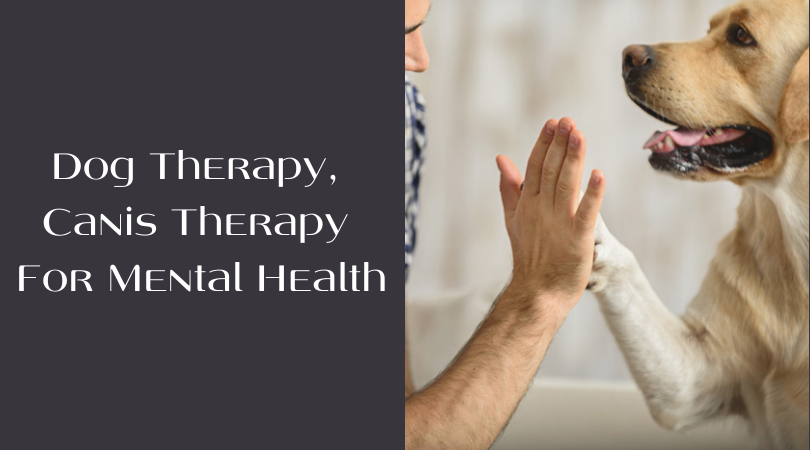 Dog therapy, or in other words, canis therapy is a method of alternative medicine aimed at curing psychological and physiological diseases through the patient’s contact with the dog. Dog therapy is a kind of pet therapy (animal therapy) – treatment of a person with animals.
Dog therapy, or in other words, canis therapy is a method of alternative medicine aimed at curing psychological and physiological diseases through the patient’s contact with the dog. Dog therapy is a kind of pet therapy (animal therapy) – treatment of a person with animals.
The positive properties of human contact with animals have been known for about 15,000 years. Already the first cavemen noted the beneficial healing effect of communicating with some animals. Nevertheless, the use of the canis therapy method by the American psychotherapist Boris Levinson in the 60s of the 20th century is officially documented. Levinson used dogs in his treatment sessions with mentally disabled, late developmental and autistic children. During the procedures, the scientist found that children have positive emotions when they see a dog. The guys became calmer, more confident and more benevolent.
The pet therapy method began to gain popularity and develop widely in the West. Gradually, the method was actively disseminated in European countries. Today, this psychotherapeutic technique is used as part of the complex treatment of diseases such as autism, cerebral palsy, mental and somatic disorders. Dog therapy promotes the development of motor skills and functions, improves mental abilities.
Research suggests that dog owners have an average life expectancy of 5 to 7 years longer than people who have lived without contact with an animal.
Dog therapy method
Experts distinguish two types of canis therapy – directional and non-directional. Directional method involves the deliberate use of dogs in the treatment of diseases in a special course. Non-directional – natural, unconscious contact with an animal.
In medical practice, the first type is mainly used. A specially trained pet with a calm temperament helps the doctor during treatment sessions. In the course of treatment, the patient is involved in communication with the dog. Playing together and tactile interaction have a pronounced therapeutic effect. Brushing, stroking and feeding the animal develops motor skills and promotes social adaptation.
There are specially designed programs for people with various diseases. Patients with psychosomatic disorders, motor and nervous diseases, as well as developmental disabilities begin to acquire everyday life skills, increase independence, and involvement in social interaction with animals and people. It is worth noting that dog therapy is used mainly as an additional method designed to provide the best effect from the main treatment. And it is rarely used as an independent type of therapy.
The following breeds are the best helpers of a doctor in the treatment process:
- labrador;
- siberian husky;
- golden retriever;
- alaskan malamute;
- bernese mountain dog.
Fields of canis therapy application
- Dog therapy has a wide range of applications. Observations and studies of doctors show that even remote observation of dogs can help a person get rid of migraines and restore a positive emotional state.
- Dogs have a keen sense of smell, which allows them to predict the onset of serious diseases when traditional methods of analysis are unable to diagnose them. For example, in Western countries, dogs are used for the early detection of signs of epilepsy and asthma attacks.
- In crisis and difficult emotional moments, contact with the dog calms and relaxes. The mental state of a person is normalized. It is also important for people in need of social support.
- When working with children, dog therapy is used to mobilize attention. This is especially true for children with concentration problems and hyperactivity. According to experiments carried out in schools, children keep their attention on animals for a long time, which leads to a decrease in internal arousal. At the same time, attention is held on live dogs much more steadily than on artificial toys.
- Motivating function. Dogs are able to motivate a person, for example, for walks. Observations have shown that the physical activity of people was significantly different before and after buying a pet. By buying a dog, people repeatedly increased the duration of their stay in the fresh air, which had a positive effect on physical and psychological health.
- Help for the elderly. It is widely used both within the home and in special centers. Some geriatric clinics use dogs to maintain the quality of life of their patients. Canis therapy is often not interrupted, even if the patient is admitted to the hospital.
- Patients with incurable diseases are much easier to cope with the course of the disease, as contact with the animal helps to cope with despair and depression.
- Canis therapy is used to treat people with mental and physical disabilities. Scientists conducted an experiment with people with vision problems. It turned out that most of the blind participants preferred dogs rather than people as guides.
- Help for people with disabilities. Studies of the behavior of wheelchair users have shown that the presence of dogs promoted a friendly environment.
A dog is not only a friend of man, but also a good doctor. Dogs play an important role in the lives of adults and children, provide psychological support, help to cope with stress and anxiety. The presence of a four-legged friend in the house makes the atmosphere calmer, cozier and more friendly.
